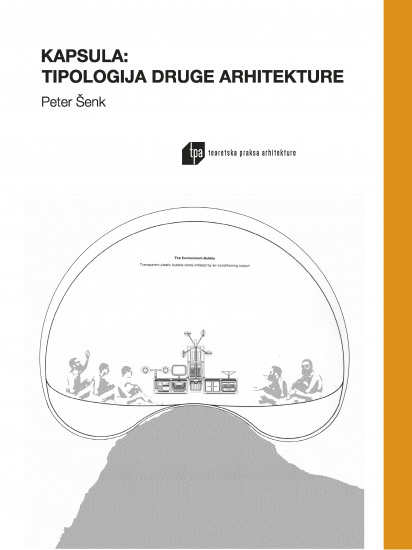
Author:
Peter Šenk
Year:
2015
The book (‘Capsule: Typology of Other Architecture’) investigates the architectural, design and urban typology of the capsule, which mainly in the 1960s broadened the concept of the basic building block of architecture to include a mono-functional or a living minimum unit called the capsule. The typology of the capsule is manifested in a variety of forms and designs. In the book it is presented with regard to the continuity of the development of the modern movement, its revisionist criticism, pioneering examples, as well as the examples and uses from the immediate present. The discourse of subsistence minimum, functionalism, technology, utopian, extreme, mobile, self-sufficient, expendable and pop designs for housing and residential equipment reflects the needs emerging in the changing social conditions, and demands for accommodation of new lifestyles that would enable personal and social transformation. In view of the legacy of universalistic technocracy, ad-hoc expression of counterculture, avant-garde directions of the second machine age through ethics and aesthetics, existentialism, pop, new brutalism, architecture autre and regional metabolic futurism, typology of the capsule allows consideration in terms of the architecture of resistance with the potential of searching for other architecture in the contemporaneity.
-
Author
-
Publishing House:
Založba ZRC
-
Publisher
Fakulteta za arhitekturo Univerze v Ljubljani
-
ISBN
978-961-254-751-6
-
Year
2015
-
Series
Language(s)
-
Specifications
paperback 14 × 20 cm 364 pages
-
E-publications
-
Permalink